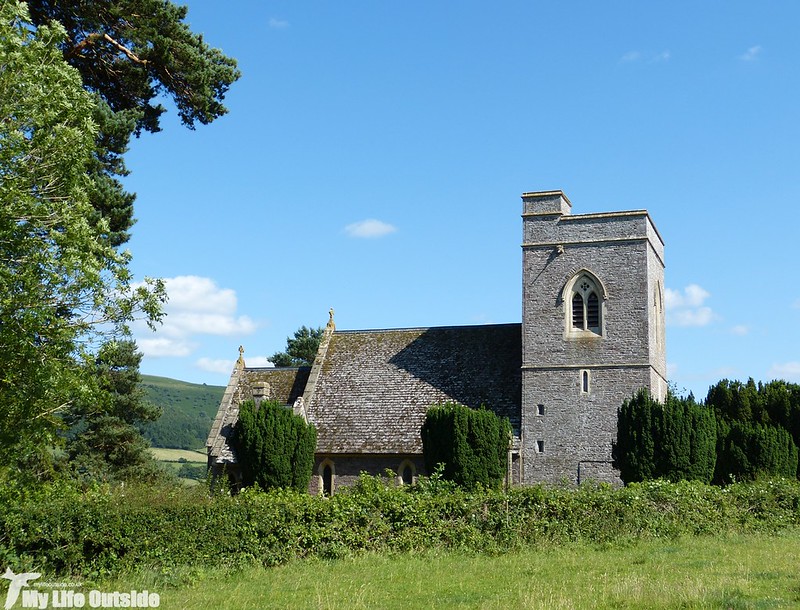After my walk around Craig Cerrig-Gleisiad I popped over the other side of Pen y Fan to Llangorse Lake. Allegedly the largest natural lake in South Wales (a title also claimed by Kenfig Pool interestingly) it has in the past proved to be a fantastic location for butterflies due mainly to extensive meadows surrounding most of its perimeter. The hope was that on such a fine day there would again be plenty on the wing and indeed that proved to be the case. However, the strong breeze that had kept me cool during my earlier exertions was now rather more of a hindrance as it kept most of the butterflies from sitting still for anything more than a couple of seconds at a time. Add to that soaring temperatures and I really didn’t fancy chasing after them any longer than necessary meaning that photographic opportunities were rather limited. I did however see plenty of Ringlets, Peacocks, Small Tortoiseshells, Six-spotted Burnet moths and even a Common Blue (I think). Those that I did manage to get a photo of included one of the numerous Ringlets and a rather fine Meadow Brown.



As ever I couldn’t help but be distracted by the birds of which Llangorse Lake delivered in impressive fashion. Reed Warblers, Sedge Warblers and Reed Buntings were all present in excellent numbers especially around the boat jetties and along the stream which enters from the West. Sedge Warblers in particular kept me entertained as they flitted through the undergrowth but it was left to a family of Reed Warblers to really put on a show. The adults were busy looking for food to feed their noisy, and presumably hungry, chicks which were hidden somewhere close by. In their haste they seemed to forget their normally secretive nature and produced what, for me at least, was a golden opportunity.

Beneath the crannog viewpoint a pair of Swallows were similarly busy with their new family whilst out across the water a huge raft of some two hundred Canada Geese and over one hundred Mute Swans could be seen. There was even a Black Swan, my first in Wales for several years and despite the naysayers still a species I enjoy seeing. While we’re on the subject of dodgy ticks this female Mandarin proved to be very confiding unlike those we saw when up in the Peak District. It is ringed but still counts in my books.

Back to more familiar fare I stopped for a while to cool off in the hide which has clearly been rebuilt since my last visit and to a ridiculously high quality at that. We’re talking oak, thatch, mortise and tenon joints, hand made ironwork and a rather nice stained glass window. I know there has been a push for a better class of hides in recent years but this may be taking things a little too far.

Down by St Gastyn’s Church I found at least twenty Sand Martins on, appropriately, the sandy shore along with a single Little Egret and my first gulls of the visit (Black Headed and Lesser Black-backed). There was even a pair of Blackcaps tending two recently fledged chicks, another first for me. Far more unexpected was the sight of a US Air Force CV-22 Osprey, the worlds first tiltrotor aircraft. I won’t go into too much detail here (that’s what Wikipedia is for) but suffice to say it made for an imposing sight heading across the lake.


I had also seen a low flying Chinook earlier in the day so there was clearly some sort of manoeuvres under way. Whether that explains the sound of shelling throughout my trip here and earlier at Craig Cerrig-Gleisiad I can’t be sure but it sounds a likely candidate given that my check of the news when I got home confirmed that, for now at least, the ruskie’s had not invaded.



0 Comments